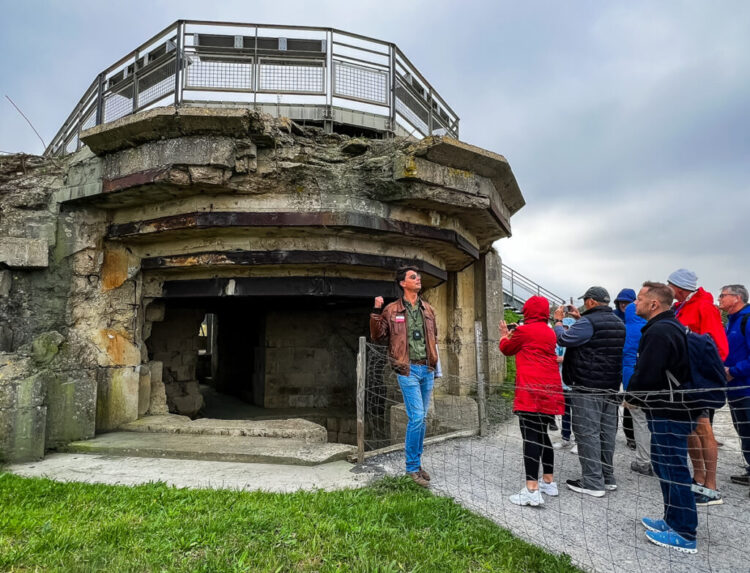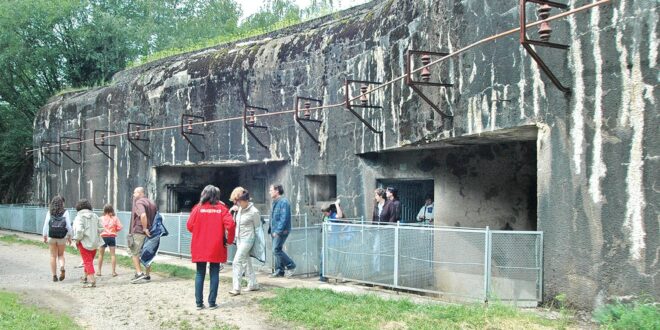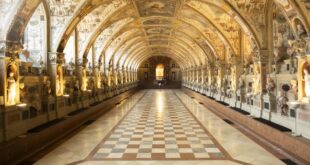Beneath the bustling streets of Paris lies a world that is as eerie as it is fascinating. The Paris underground is not just about the famous Catacombs with their walls of neatly stacked skulls, but also about hidden tunnels, wartime bunkers, and forgotten stories that have shaped the city’s identity.
For travelers intrigued by history, mystery, and a touch of darkness, venturing below the surface offers a unique perspective on the French capital.
The Paris Catacombs ─ A City of the Dead
The Catacombs are the most famous part of the Paris underground. Created in the late 18th century to address overcrowded cemeteries, they became a massive ossuary holding millions of bones. Visitors walk through dimly lit corridors where skulls and femurs are stacked in artistic arrangements, a chilling reminder of mortality.
The experience is both haunting and beautiful. While the official tour covers only a small fraction of the tunnels, it is enough to convey the immensity of this underground necropolis. Guides often share stories of how these bones were moved during the night, accompanied by religious ceremonies, to avoid alarming the public.
Exploring the underground requires stamina and a central base. Many travelers choose accommodation close to key sites for easier access. Those who want a convenient spot not far from the Catacombs or other historic areas often look at hotels Republique Paris. Located in a lively district, this area gives visitors the flexibility to enjoy both the mysteries below ground and the vibrant Parisian life above ground.
Forgotten Tunnels Beneath the City
Beyond the Catacombs, Paris is laced with abandoned tunnels. Many are remnants of old limestone quarries, which supplied the stone used to build Paris’s iconic monuments. These quarries stretch for kilometers and some are still uncharted.
Much of the limestone used for landmarks like Notre-Dame and the Louvre came from these underground quarries.
Cataphiles, or urban explorers, often map out forgotten sections and share stories of hidden discoveries.
Walls of certain tunnels are decorated with murals and graffiti, turning abandoned stone corridors into underground galleries.
Some chambers have been transformed into secret gathering places, including makeshift bars and social spaces.
In the 1980s, police uncovered a fully equipped underground cinema, complete with electricity, film reels, and a working bar.
Urban explorers, known as cataphiles, have long ventured into these spaces. They discover murals, hidden chambers, and even makeshift bars created by clandestine communities. While official access is forbidden and risky, these stories highlight a living culture beneath the city. In the 1980s, police even discovered a fully equipped underground cinema with electricity and seating for dozens.
Wartime Secrets and Resistance Hideouts
During World War II, Paris’s underground played a crucial role in resistance efforts. The tunnels provided safe passage for fighters, storage for weapons, and hidden meeting points away from the eyes of German occupation forces.
Some bunkers from this era remain intact, with inscriptions on walls and remnants of communication lines. In fact, German command also used parts of the underground, turning it into a battlefield of secret operations. These stories bring to life the underground’s role not only as a cemetery, but also as a theater of survival and defiance.

Hidden Chapels and Unlikely Discoveries
It is not just bones and bunkers that lie beneath Paris. Over the centuries, the underground has revealed chapels carved into stone, forgotten wells, and even natural springs. Workers digging metro lines in the 19th and 20th centuries often stumbled upon such finds, adding to the city’s layered history.
One striking discovery is the underground chapel dedicated to Saint Barbara, the patron saint of miners. It reflects the lives of quarry workers who spent days in darkness, carving out the stones that built the city above.
Why the Paris Underground Still Captivates
What makes the Paris underground so captivating is not just its scale, but the way it connects centuries of history. From medieval quarry workers to World War II fighters, from artists painting secret murals to modern tourists, these tunnels hold stories of life and death intertwined.
Exploring this hidden world is like stepping into a living archive where the past whispers from every stone. The Catacombs and tunnels remind us that Paris is not only a city of light, but also a city of shadows.
Conclusion
The Paris underground is more than a curiosity. It is a mirror of the city’s growth, struggles, and resilience. Whether walking among the silent bones of the Catacombs, imagining the courage of wartime resistance, or hearing about underground cinemas, visitors find a side of Paris rarely seen.
For those planning a visit, balance the solemnity of history with the excitement of discovery, and choose a base that lets you move between the surface and the hidden depths with ease. The underground may be forgotten by many, but once experienced, it is never forgotten by you.
 Hi Boox Popular Magazine 2025
Hi Boox Popular Magazine 2025



